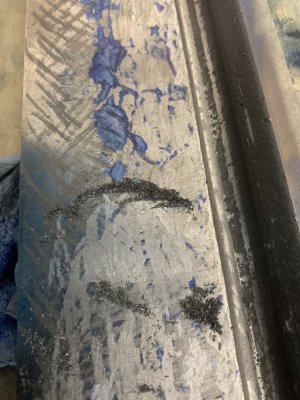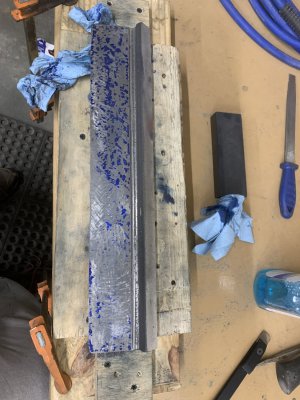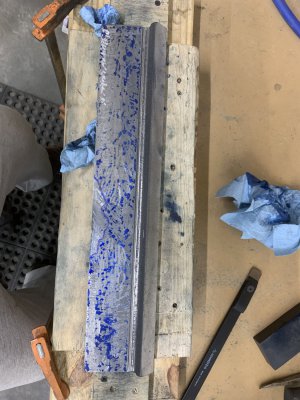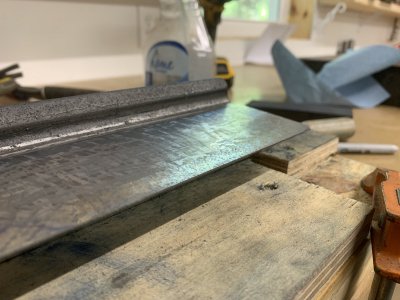@Richard King 2
As I've said, I'd love to be able to take one of your classes. But I deal with Crohn's disease, and traveling usually leads to ugly problems. I've paid your invoice and look forward to getting the copy of your scraping video. I appreciate your advice here and hope other's can benefit too.
Here's some of my rough scraping. Measuring the depth with an indicator shows I'm getting around .0005 depth.
View attachment 425473
Here's two consecutive bluings, fairly heavy, with dykem. Between these I step scraped from the left edge, two steps. Trying to pivot the face down toward the area not making contact. If you click these thumbnails open you can tell that the left edge just below center is still not making contact. (It still shows milling marks in the small area outlined in the second picture below. It hinges wide, only about two inches in from either end, so it's not convex.
View attachment 425474View attachment 425475
Here's a little bit of light off the surface that gives some indication of the scraping. I'm scraping small scrapes near the front edge, so that appears to me more like a finished scraping. The central portion appears to have gotten over smoothed from several consecutive stonings. I think one mistake I made when milling this was to skim it just enough to clean off the surface, when I should have gone another .050 or so to get further from the surface hardening from cooling?
View attachment 425476
I'm guessing that in another roughing pass I'll have contact more or less over the full surface and be ready to move on to scraping for more PPI.






